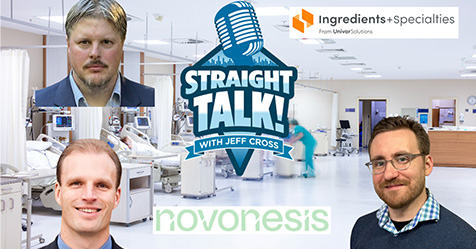ISSA Hygieia’s recent Masterclass webinar event, moderated by Senior Director of merchandising at BradyPLUS Carolina Bane, cut through hype and jargon to show practical, low-risk ways professionals can use artificial intelligence (AI) today.
Two longtime ISSA Hygieia advocates led the session: Laura Craven of Imperial Dade and David Brownley of GOJO Industries. Their core message was simple: Start small, treat outputs as drafts, and use AI like a capable assistant that amplifies—not replaces—your work.
Craven opened by urging attendees to reframe AI as an approachable helper rather than a threat: “Rebrand AI in your mind, you can think of it as assisted intelligence, a digital assistant, smart assistant, whatever you like.” She then provided practical guidance of how teams can get benefits without big bets.
The first anchor concept was accessibility. Craven noted the consumer-grade turning point when a chat interface put advanced capability into everyone’s hands. Marketing often becomes the “gatekeeper” of AI because creative and content tasks were the first to feel its impact—sometimes with anxiety about job security. It is crucial that leaders introduce tools with clarity, training, and respect for craft.
From there, the presenters drew a clean line between what AI is and isn’t. It can identify patterns, draft first versions, summarize, translate, and string steps together. It cannot hold human consciousness, emotion, or true originality—and it sometimes gets things confidently wrong. Their bottom line: Always fact-check; always keep a human in the loop.
Craven and Brownley also mapped five everyday AI types into plain language you can recognize in your day: machine learning as the pattern-spotter; natural language processing as the language-understander; computer vision as the “eyes”; generative AI as the first-draft creator; and agentic AI as the doer that acts. Most of us already use several of these without naming them—recommendations in streaming apps, auto-transcription, or your phone’s Face ID.
The cases for business use were specific and immediate. Sales teams can have AI assemble first-draft outreach from CRM context, propose talk tracks, and generate meeting summaries with action items. Marketing can turn a long article into a carousel, generate variants for A/B tests, or translate copy. HR can draft job descriptions and structured interview guides. Operations can spin up SOPs and training guides. Supply chain can summarize supplier performance and produce scorecards. Craven emphasized the governing word across all of these: Draft.
To show the speed shift, Craven demoed a lightweight workflow; she brainstormed webinar topics in ChatGPT, selected one, asked for a six-slide outline, pasted that outline into Gamma, configured audience, tone, and visual style, then generated a clean starter deck in about a minute. Edit, refine, export. It’s not perfection—it’s momentum.
Brownley then showcased a force multiplier that many overlook: “It’s called deep research.” He described it as the fastest on-ramp for executives and managers to move from question to structured brief. With one prompt, he had a bot produce a 21-page AI playbook tailored to JanSan executives, including an executive summary, tool recommendations, responsible-use tips, and step-by-step instructions. He stressed that strong prompts—clear role, audience, format, examples—are the difference between “good” and “great” output, and quick iterations usually close the gap.
Responsible use ran through the session like a watermark. Free tools may learn based on what you paste into them; even paid or “captive” versions are not 100% secure. Don’t upload confidential data or PII. Request sources, verify claims, and be transparent with your team about when you utilize AI. If your company lacks an AI policy, help create one.
For getting started, the presenters offered two paths: a problem-based model (use AI to diagnose or pressure-test a known pain point such as missed quotas, flat CTR despite higher spend, or inventory imbalances), and a use-case model (target repetitive, low-risk tasks like meeting notes, email drafts, weekly reports, slide creation, or knowledge search). Brownley’s nudge to his creative team applies broadly: automate production work so humans can focus on strategy and craft.
Learning doesn’t have to be heavy. Craven pointed attendees to micro-courses (LinkedIn Learning, Marketing AI Institute, and Google’s AI Essentials) and ISSA education. Brownley encouraged a simple prompt to kickstart relevance: Ask a bot for “the top five ways other people in my job title have been using AI” and test one this week. It’s okay to start with fun—Craven and Brownley prompted Suno to generate a song from a scenario—because familiarity dissolves fear.
If there was a single habit to take away, it was this cadence: Explore embedded tools where you already work (Microsoft Copilot, Google Gemini); use AI first for a small, safe task; treat outputs as drafts; then verify and ship. Repeat. In Brownley’s words, becoming “AI-forward” is less about grand strategy and more about consistent, thoughtful use that saves hours and sharpens the human parts of your job.
AI won’t do your thinking for you. Used wisely, it will give you back the time to do your best thinking.
Click here to learn more about the ISSA Hygieia Network.


